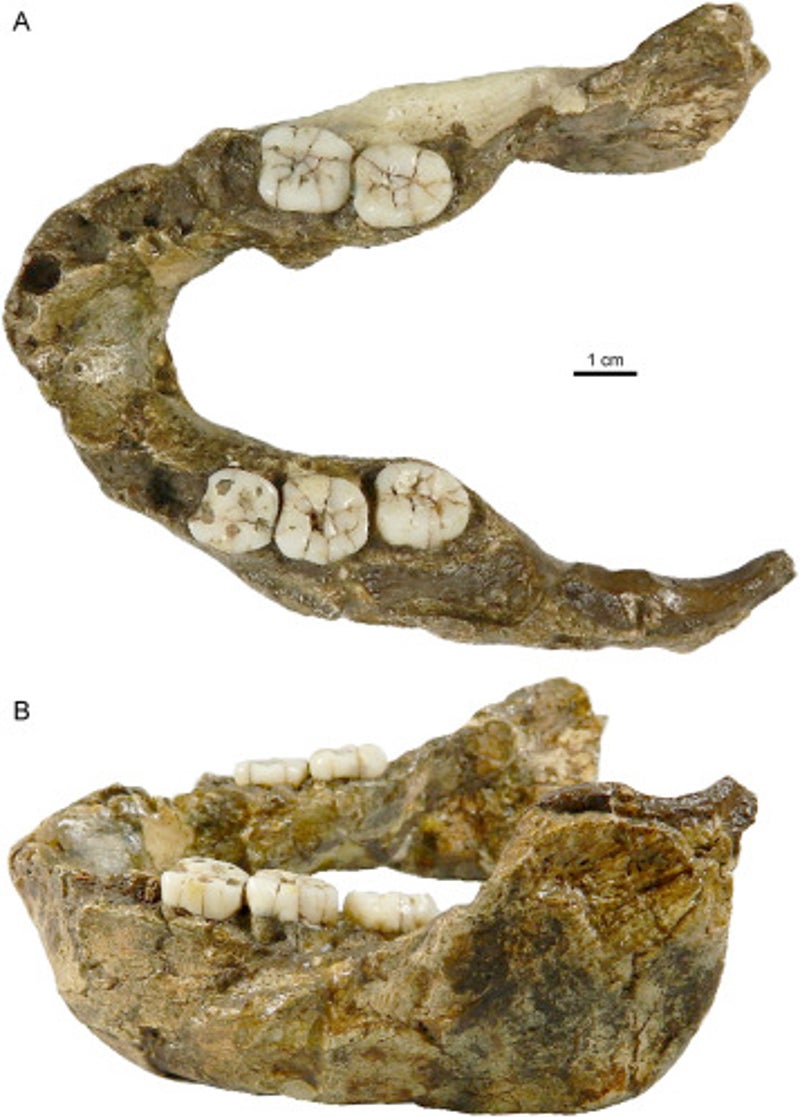It's time to rewrite the history textbooks, as a distant new member of our ancestral family tree has been discovered. Scientists say a new, never-before seen species of human ancestor roamed the Earth as recently as one million years ago. Called Paranthropus capensis, it was a more slender member of the Paranthropus genus - a close relative of modern humans (homo sapiens). Paranthropus have previously been dubbed the 'nutcracker men' because of their extremely big jaws, robust skull bones and large molar teeth.
![[There are already three known species in the Paranthropus genus - Paranthropus aethiopicus, Paranthropus boisei and Paranthropus robustus - which lived between about 1 million and 2.7 million years ago. Pictured, P. boisei reconstruction at Natural History Museum Basel]](https://i.dailymail.co.uk/1s/2025/02/06/10/94922073-14367299-image-a-60_1738838465291.jpg)
They walked on two legs, but had smaller brains than other extinct hominins – which may have contributed to their extinction. Although not a direct ancestor, we share distant relatives with Paranthropus, which lived in Africa between about one million and 2.7 million years ago. It's thought Paranthropus lived in wet grasslands or woodlands, eating plants such as tree fruits and leaves, and possibly small amounts of meat.
![[Paranthropus or 'nutcracker man', likely coexisted with other hominins. Pictured, a model of a Paranthropus boisei male in the Museum of Human Evolution, Spain]](https://i.dailymail.co.uk/1s/2025/02/06/10/92599695-14367299-Picture_is_what_researcher_believe_P_boisei-a-63_1738838733932.jpg)
Scientists say its discovery could rewrite the entire history of our evolution. The researchers analysed a jawbone found in South Africa in 1949. The jawbone and teeth are smaller than other Paranthropus specimens, leading the team to describe this as a new species - Paranthropus capensis. There are already three known species in the Paranthropus genus - Paranthropus aethiopicus, Paranthropus boisei and Paranthropus robustus - which lived between about 1 million and 2.7 million years ago. Pictured, P. boisei reconstruction at Natural History Museum Basel.
![[Digital scans of SK 15 teeth (left) and Paranthropus robustus teeth (right) show differences in size]](https://i.dailymail.co.uk/1s/2025/02/06/09/94920443-14367299-image-a-30_1738834530499.jpg)
For their study, the researchers examined SK 15, a mandible (lower jaw) discovered in Swartkrans cave, South Africa, back in April 1949. Located about 20 miles from Johannesburg, the limestone cave is rich in hominin remains including Homo ergaster (a variety of Homo erectus) and Homo habilis. Initially, SK 15 was dated to around 1.4 million years ago and thought to belong to Homo ergaster, which was the first of our ancestors to look more like modern humans.
![[The researchers examined SK 15, a mandible or or lower jaw discovered in Swartkrans cave, South Africa, back in April 1949]](https://i.dailymail.co.uk/1s/2025/02/06/09/94921111-14367299-The_researchers_examined_SK_15_a_mandible_or_or_lower_jaw_discov-a-51_1738835274804.jpg)
But the new analysis, which involved taking digital 3D scans of the skeletal remains, suggests it belonged to Paranthropus or 'nutcracker man', which likely coexisted with other hominins. The team found the thick, bony part of the mandible that anchors the teeth ('mandibular corpus') is proportionally lower and thicker than any known Homo species. Meanwhile, the molars – the teeth at the very back of the mouth used for grinding food – are more rectangular than Homo molars.
![[Paranthropus, an ancient relative of humans, has been dubbed 'Nutcracker Man' because of his powerful jaws and huge teeth. Pictured, skull of Paranthropus boisei at National Archaeological Museum of Madrid]](https://i.dailymail.co.uk/1s/2025/02/06/09/94920445-14367299-Paranthropus_an_ancient_relative_of_humans_has_been_dubbed_Nutcr-a-26_1738834328290.jpg)
But the jawbone and teeth are slightly smaller than other Paranthropus specimens, leading the team to describe this as a new species – Paranthropus capensis. 'Paranthropus capensis [was] a more gracile species of Paranthropus than the other three currently recognized species of this genus,' ay the authors in their paper, published in Journal of Human Evolution. Paranthropus or 'nutcracker man', likely coexisted with other hominins. Pictured, a model of a Paranthropus boisei male in the Museum of Human Evolution, Spain.
![['The human lineage': This illustration shows the closest extinct relatives of modern humans (homo sapiens, right)]](https://i.dailymail.co.uk/1s/2025/02/06/11/93960575-14367299-Neanderthals_had_large_noses_strong_double_arched_brow_ridge_and-a-65_1738841906741.jpg)
Digital scans of SK 15 teeth (left) and Paranthropus robustus teeth (right) show differences in size. The researchers examined SK 15, a mandible or or lower jaw discovered in Swartkrans cave, South Africa, back in April 1949. Paranthropus was a close fossil relative of ours which lived in Africa between about 1 million and 2.7 million years ago. The genus was characterized by robust jaw and skull bones and was a muscular, more gorilla-like creature.
Paranthropus was part of a line of close human relatives known as australopithecines that includes the famous three million-year-old Ethiopian fossil 'Lucy', seen by some as the matriarch of modern humans. Roughly 2.5 million years ago, the australopithecines are thought to have split into the genus Homo, which produced modern Homo sapiens and the genus Paranthropus that dead-ended. 'It is most compatible with the morphology of Paranthropus, albeit showing smaller dimensions.'.
This is the first time since the 1970s that a new species of Paranthropus has been identified, lead author Clément Zanolli, a paleoanthropologist at the University of Bordeaux, told Live Science. P. capensis likely lived in Africa 1.4 million years ago alongside P. robustus, but the latter likely had a highly specialized diet, as suggested by bigger jaw and teeth. 'P. capensis, which displays smaller teeth and a less robust mandible, might have had a more varied diet and potentially exploited different food resources,' he said.
For more than 60 years it was thought Paranthropus evolved massive back teeth to consume hard food items, although a 2021 study challenged this. Humans today (homo sapiens) did not evolve from Paranthropus, which reached an evolutionary ‘dead end’ when they died out about 1 million years ago. But both Homo and Paranthropus are thought to have descended from a group of hominins known as Australopithecus, from which they evolved at least three million years ago.






















